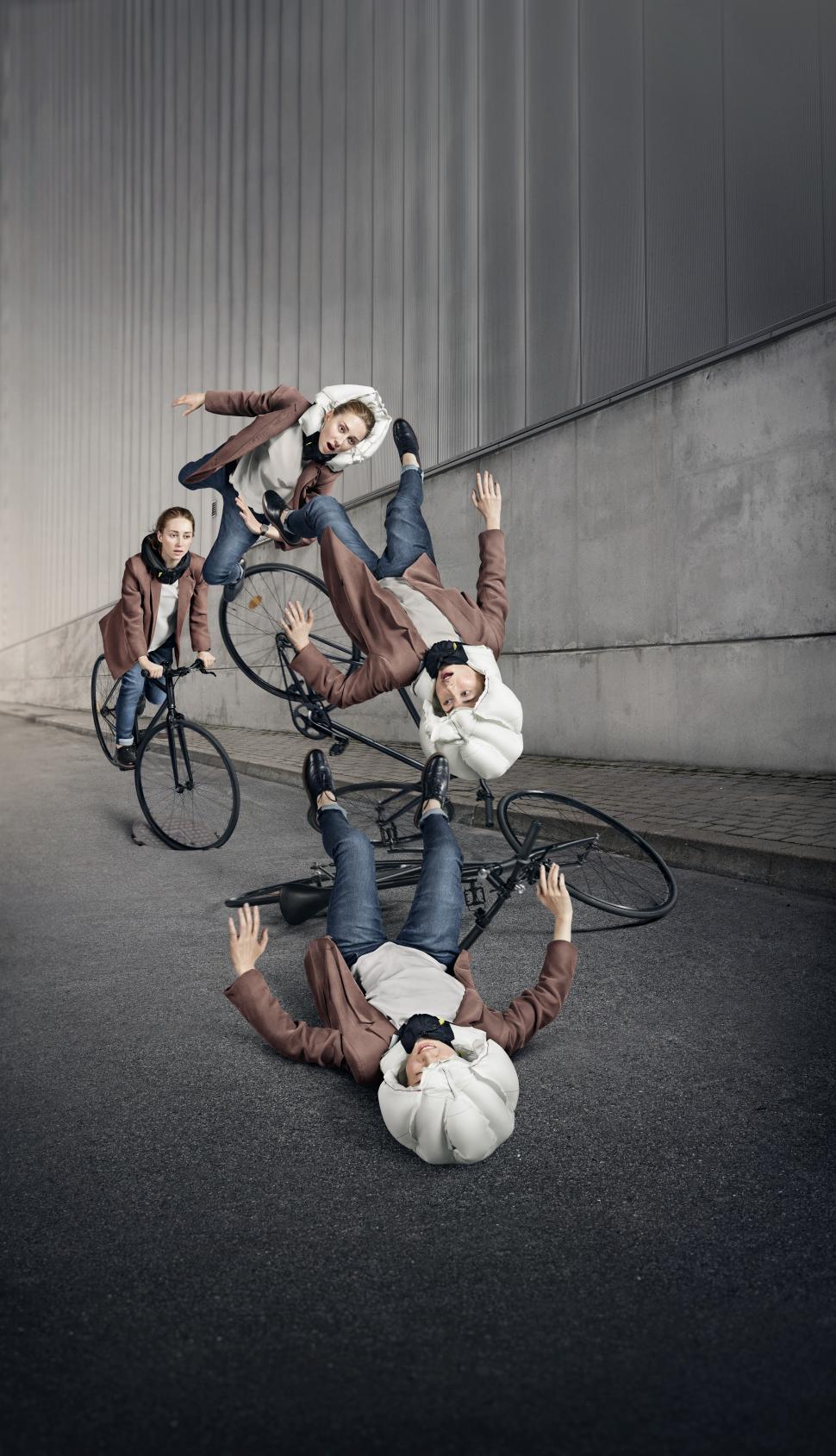- News
- Reviews
- Bikes
- Accessories
- Accessories - misc
- Computer mounts
- Bags
- Bar ends
- Bike bags & cases
- Bottle cages
- Bottles
- Cameras
- Car racks
- Child seats
- Computers
- Glasses
- GPS units
- Helmets
- Lights - front
- Lights - rear
- Lights - sets
- Locks
- Mirrors
- Mudguards
- Racks
- Pumps & CO2 inflators
- Puncture kits
- Reflectives
- Smart watches
- Stands and racks
- Trailers
- Clothing
- Components
- Bar tape & grips
- Bottom brackets
- Brake & gear cables
- Brake & STI levers
- Brake pads & spares
- Brakes
- Cassettes & freewheels
- Chains
- Chainsets & chainrings
- Derailleurs - front
- Derailleurs - rear
- Forks
- Gear levers & shifters
- Groupsets
- Handlebars & extensions
- Headsets
- Hubs
- Inner tubes
- Pedals
- Quick releases & skewers
- Saddles
- Seatposts
- Stems
- Wheels
- Tyres
- Health, fitness and nutrition
- Tools and workshop
- Miscellaneous
- Tubeless valves
- Buyers Guides
- Features
- Forum
- Recommends
- Podcast
 2021 Hövding airbag 3
2021 Hövding airbag 3Hövding’s airbag for cyclists beats all other cycling helmets in independent safety test
Hövding’s airbag for cyclists offers greater protection than standard cycling helmets, according to the results of extensive cycle helmet tests conducted by the independent French testing institute Certimoov at the University of Strasbourg.
Hövding’s £249 safety offering doesn’t look like a typical 'helmet'... and that’s because it’s not, with the Swedish brand boldly stating "the world's safest cycling helmet is not actually a cycling helmet" on its website. It’s actually an airbag that is activated (and rendered unusable after it has inflated) in the event of a crash, and it's now in its third iteration after officially launching back in 2012. Our own Tony Farrelly tried out version 2.0 for himself in this very entertaining video below:
“Via advanced sensors and a unique algorithm, the Hövding monitors the movement patterns of the cyclist and reacts by releasing an airbag in 0.1 seconds in the event of an accident, offering the world’s best impact absorption and protection against rotational forces,” says Hövding.
There were 47 adult helmets in Certimoov's test, and the Hövding bagged full marks for the protection against rear impacts. It scored 4.5/5 for the other metrics which were frontal impact, lateral impact, oblique frontal impact, oblique lateral impact 1 and oblique lateral impact 2.
Researchers at Certimoov are said to have developed a “testing protocol for objectively assessing the protection offered by helmets under realistic conditions that reflect actual use as closely as possible”. A brain model is also used to measure the effect on the brain in a collision.
The test report concluded: “The results show that Hövding’s safety system provides a high degree of protection with a rating of 4.5 stars, while the best of the other helmets tested achieved no more than four stars.
“It is interesting to note that Hövding also provides proper protection against side impacts and oblique forces that lead to rotation.
“It is clear that Hövding’s protection considerably reduces the risk of brain injury under all kinds of impact, and in the case of oblique impact, the risk reduction is dramatic.”
The European standard simply grades helmets as approved or not, while Ceritmoov further classifies these approved helmets according to their safety level using a star system from 0 to 5.
Among the cycling helmets tested were Bontrager’s Starvos-Wavecel, which was rated at safety level 4, and the Giro Synthe MIPS and Smith Session MIPS both at 3.5.
More information about the test and Certimoov’s testing protocols can be found here. Hövding isn't shipping directly the the UK currently, citing Brexit as the reason; but you can buy one through its UK retail partner Condor Cycles.
Anna has been hooked on bikes ever since her youthful beginnings at Hillingdon Cycle Circuit. As an avid road and track racer, she reached the heady heights of a ProCyclingStats profile before leaving for university. Having now completed an MA in Multimedia Journalism, she’s hoping to add some (more successful) results. Although her greatest wish is for the broader acceptance of wearing funky cycling socks over the top of leg warmers.
Latest Comments
- brooksby 2 sec ago
It forces all the other cyclists out into moving traffic, too!
- brooksby 4 min 59 sec ago
I think Cycling UK misunderstand, here: Windsor and Eton Business Partnership called the plans “a short-term tactical move by the council to...
- Zjtm231 5 min 19 sec ago
Let me guess, no comment from Matthew Briggs?
- Jetmans Dad 6 min 46 sec ago
Vinyl records are expensive to produce, and sell a tiny fraction of the amount sold on CD and streaming. It's called economies of scale ... and no...
- brooksby 8 min 41 sec ago
Have to admit, that was my first thought too, and I'm willing to give them the benefit of the doubt....
- Rendel Harris 19 min 13 sec ago
I caught a clip involuntarily the other day – popped up on Facebook – of an interview between him and his fellow lump of unspeakableness Piers...
- mdavidford 1 hour 2 min ago
There's permeable and then there's permeable, though. Even a permeable driveway is likely to increase runoff vs the garden it replaced - just not...
- Pub bike 1 hour 6 min ago
I initially baulked when the I saw that the BBC felt it necessary to point out that 97mph is "well over the 70mph speed limit" seeing this as a...
- David9694 2 hours 1 min ago
Mainline closed after car crashes on to railway...
- Rendel Harris 1 hour 14 min ago
Thanks for the advice, you're a man after my own heart in terms of keeping after them! I haven't been able to focus much on this over the last...


Add new comment
13 comments
Whenever I see this helmet I think of James Cracknell, who was whacked in the back of the head by a passing truck mirror when riding in the USA - he claims it was the helmet saved his life (really, really don't want to get into a discussion of whether he's right or not) – presumably this device would not protect against such injuries.
... or maybe this example from todays ride
Since people know it is more effective, they will therefore indulge in more risk compensation activity, negating the protection, just like all the other helmets.
Seriously, when are we going to stop talking about the blind alley of victims protecting themselves and address the causes of the danger to us?
I don't think this is valid, the difference between airbag and helmet is much smaller than helmet and no helmet.
On the other hand drivers will not be aware that the cyclist is wearing it, and so they may even take fewer risks around riders using this system.
On the other hand drivers will not be aware that the cyclist is wearing it, and so they may even take fewer risks around riders using this system
No, they don't care about cyclists in the slightest, whether they're wearing helmets or not.
It definitely seems great in protection compared to standard helmets, and yes I would be tempted to buy one for commuter needs. But it costs nearly as much as my hybrid I commute. And I am a clumsy rider, so I could engage in falls similar to the ones shown on the video nearly once a year. Had I worn this thing instead of helmet, cycling would be very expensive.
Also a key safety feature of helmets is their visor. With the visor you can control sudden sun and light reflections very effectively.
In Netherlands or a country with decent cycling infrastructure it may make some sense as it maybe less likely to deploy so it will be worth the extra money spent.
Well as of 2018 for the video, after inflations it is £99 a pop to get a new one once you have spent £250 or so. And in theory if you have been in a crash you should need to splash the cash on a new helmet anyway if you do wear them so I suppose it depends on do you do cheap and cheerful on normal ones.
I guess the point was that you do not necessarily damage the helmet in a crash. Over the years I've had my share of crashes during commutes, offroading or group rides, but never ever my helmet had touched the ground, so there was no need to replace it immediately (I still replace them once in a few years). However, the airbag would have been triggered in any of these events.
I suppose it does inflate either way which I didn't take into account. Doesn't protect you from low branches or aussie cars with badly checked loads either.
Wouldn't a cap do the job just as well in this respect?
Well the point is to avoid wearing anything on your head.
Should you have to wear something, let it be a helmet and serve also as a protection.
Not sure I really follow the logic there - to avoid wearing something on your head, you'd rather wear something on your head, that's bulkier than the thing you would otherwise have been wearing on your head?
Presumably the lab tests are conducted on the Hövding in its inflated state. What I would be unconvinced about is the risks of not deploying in the event of a crash, and also deploying when not required.